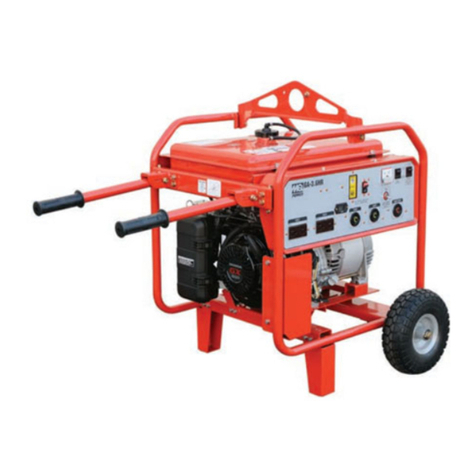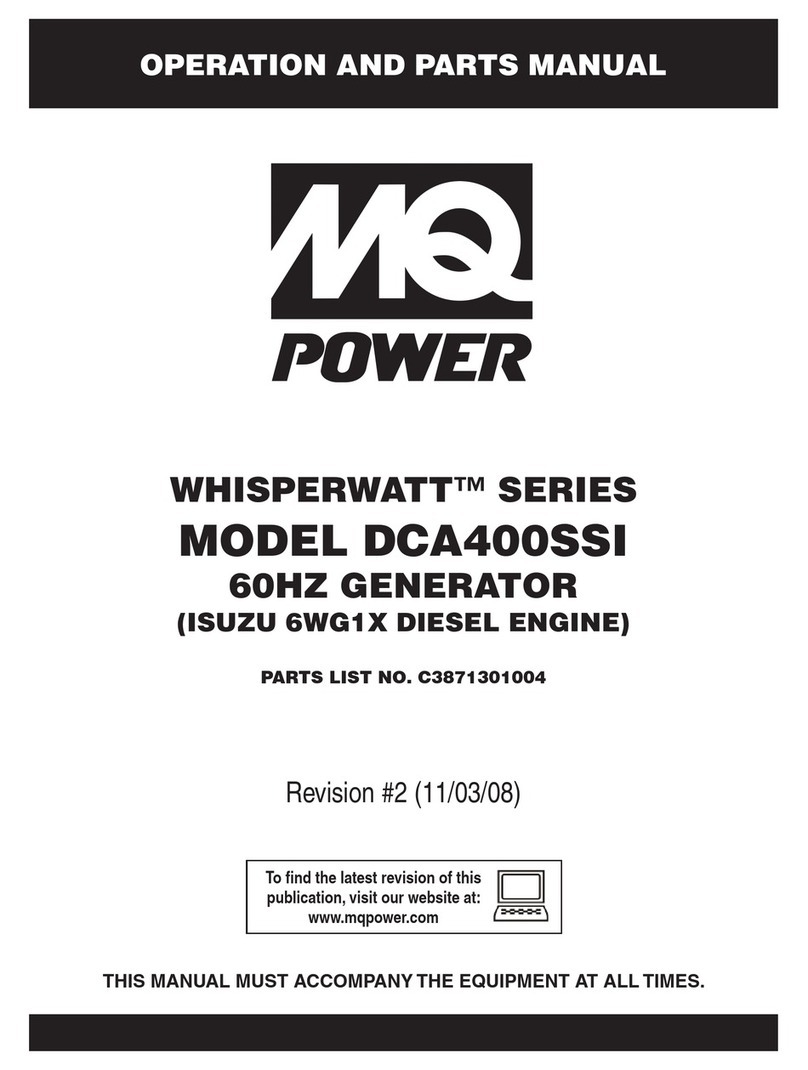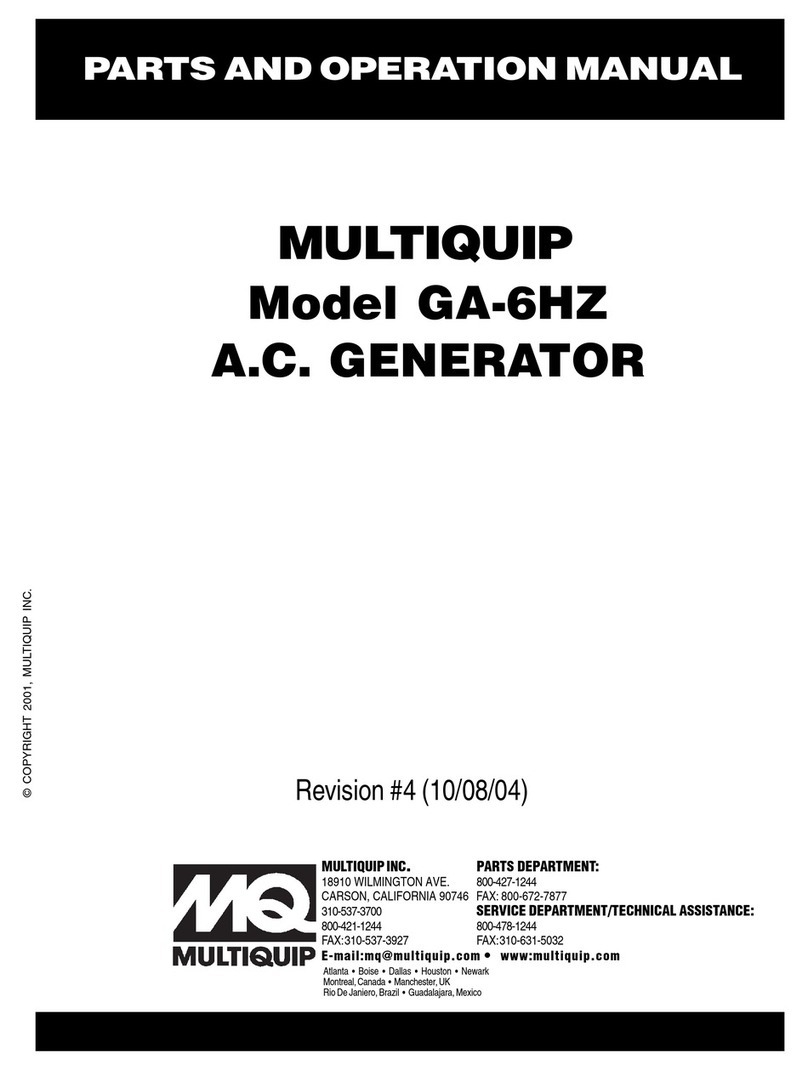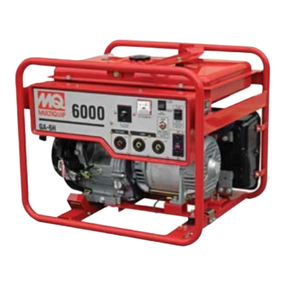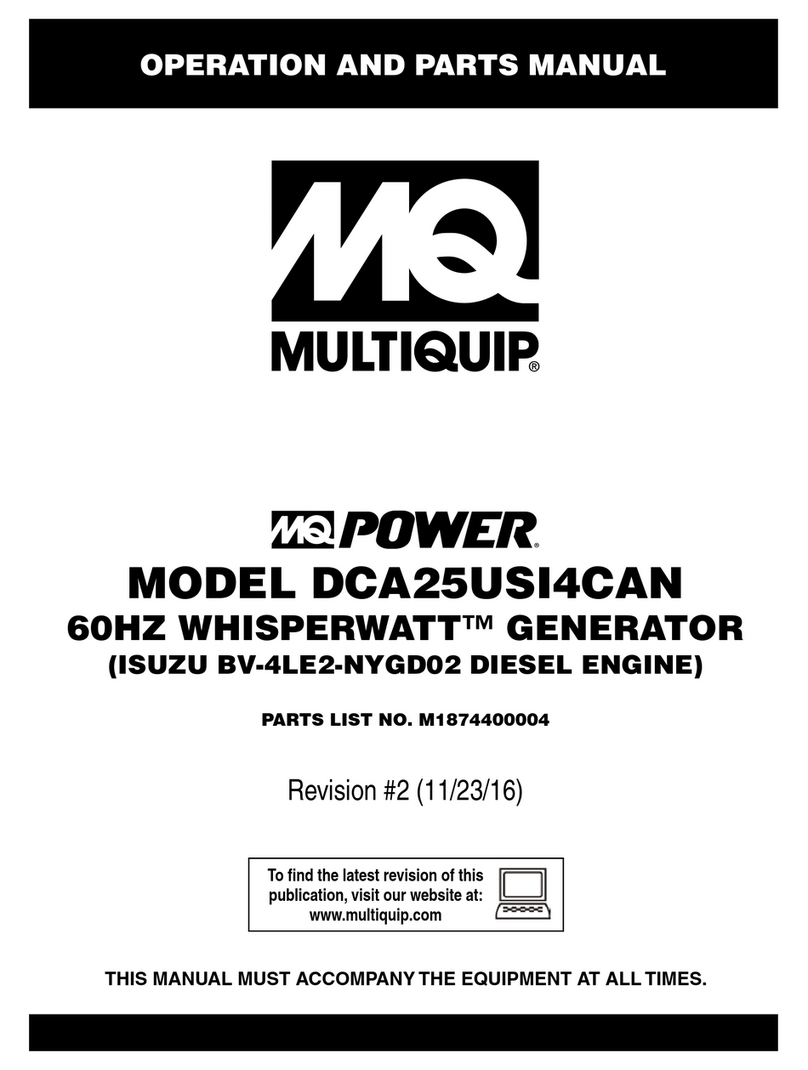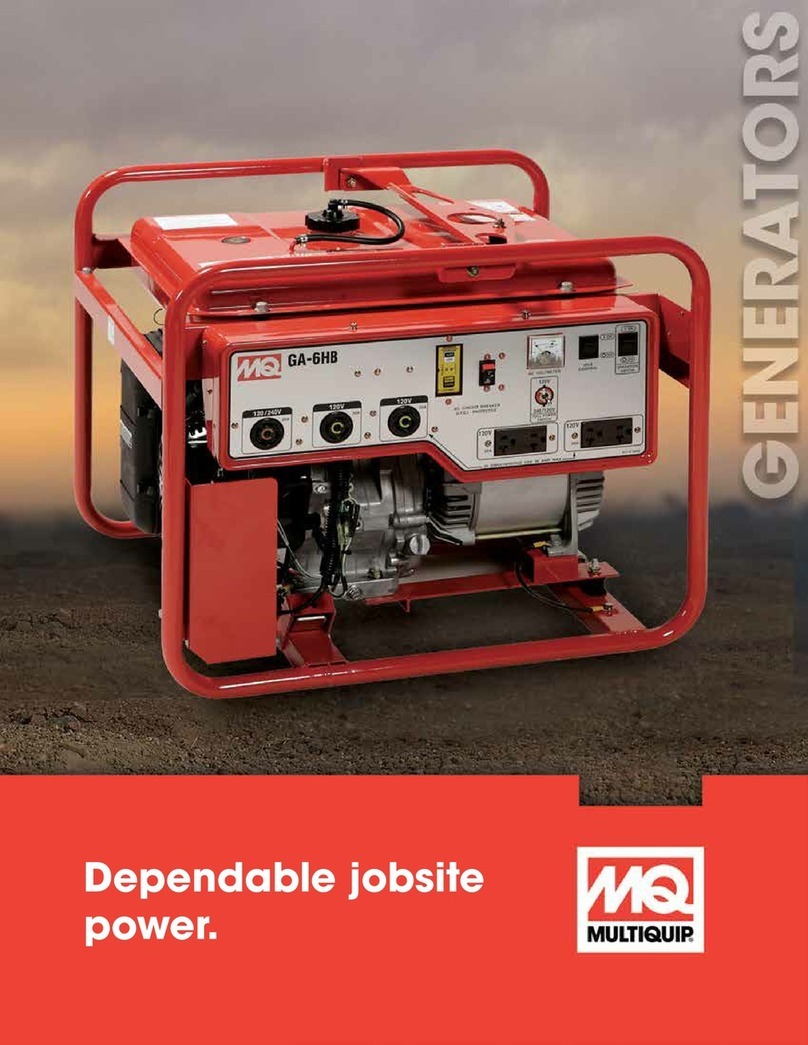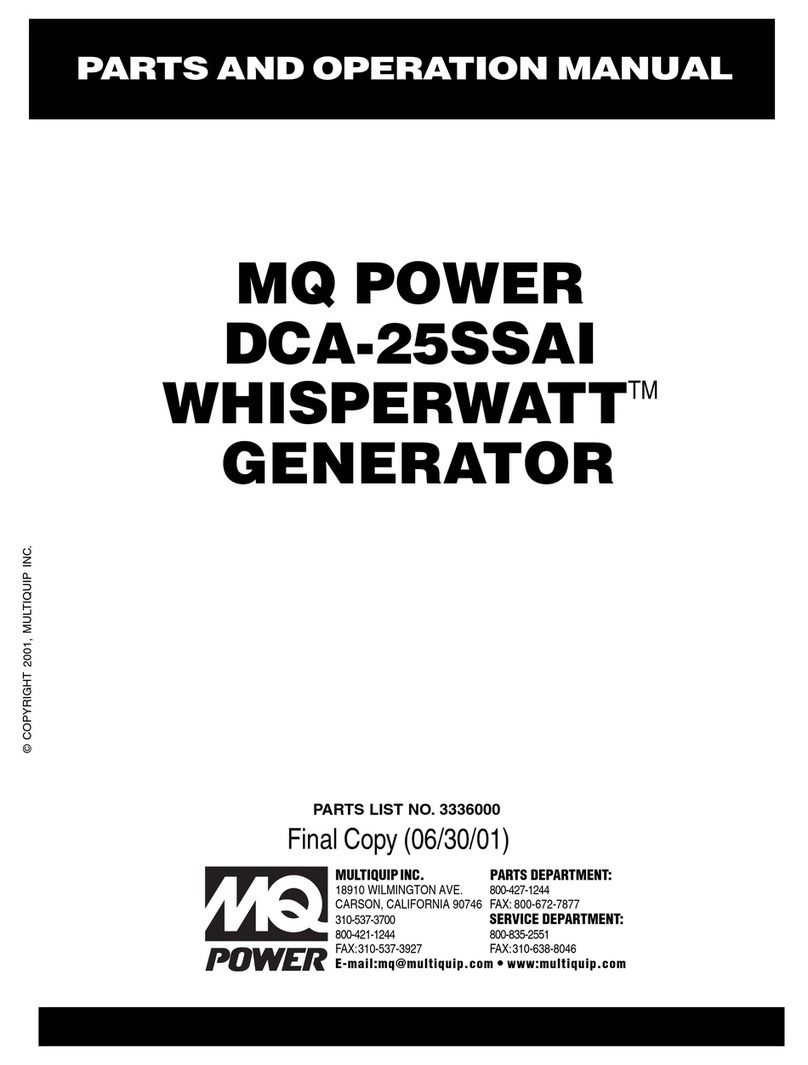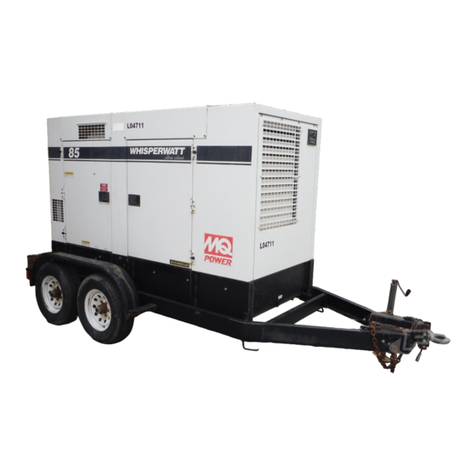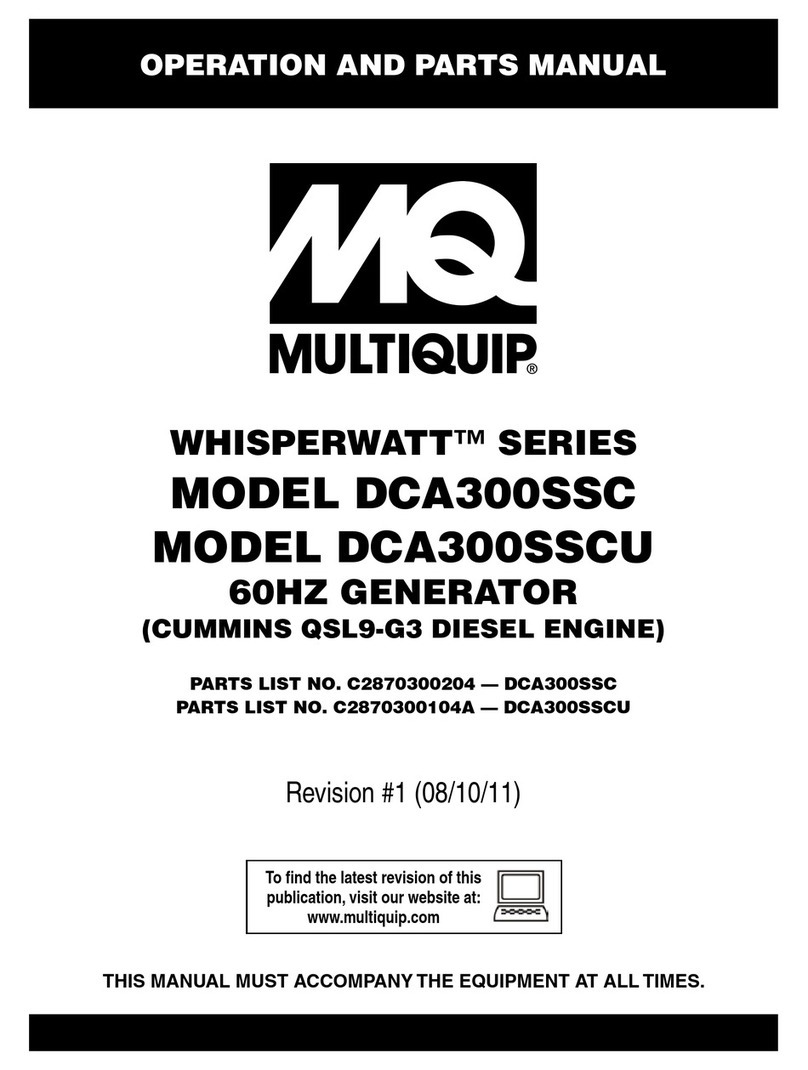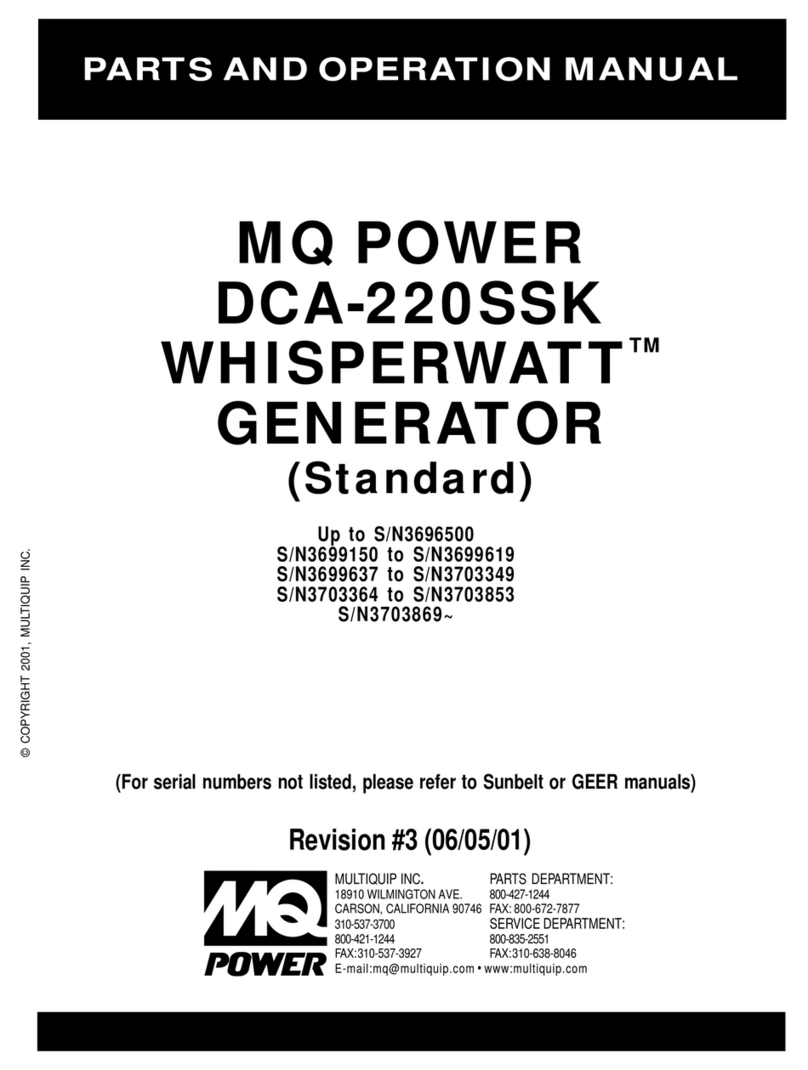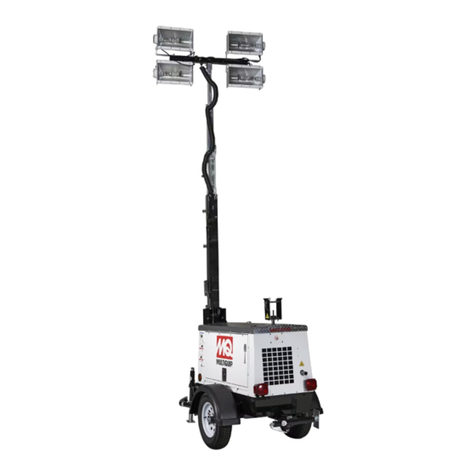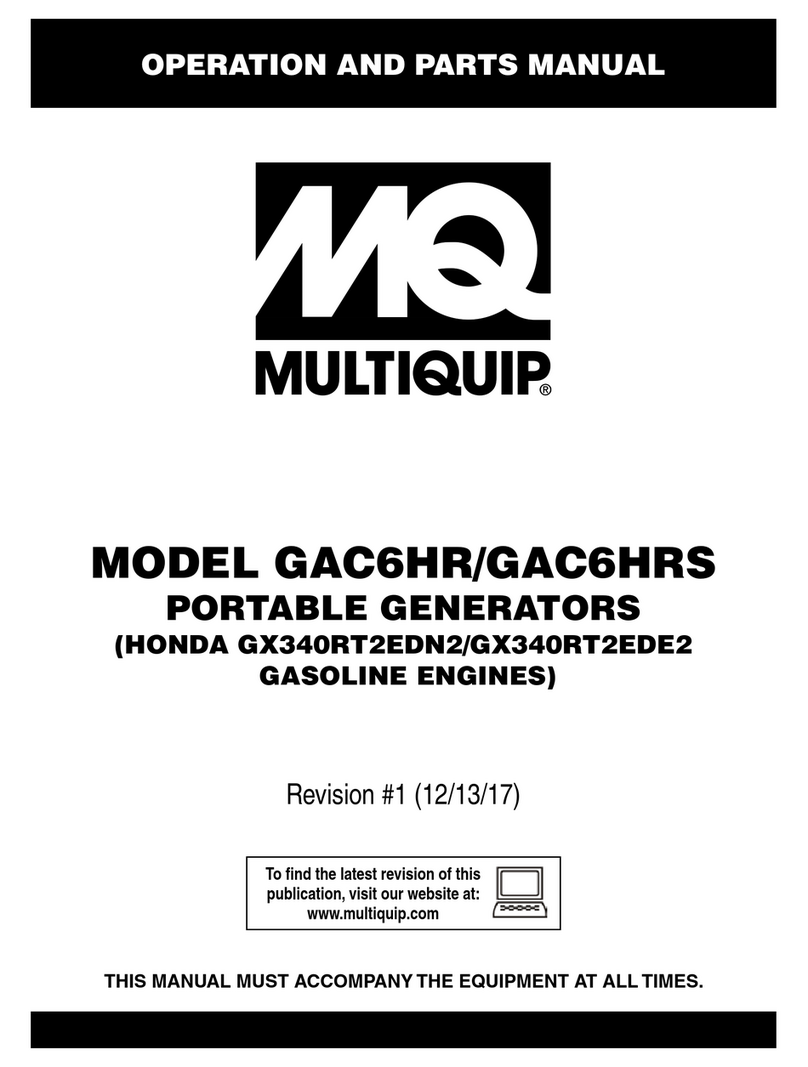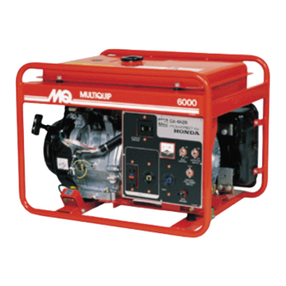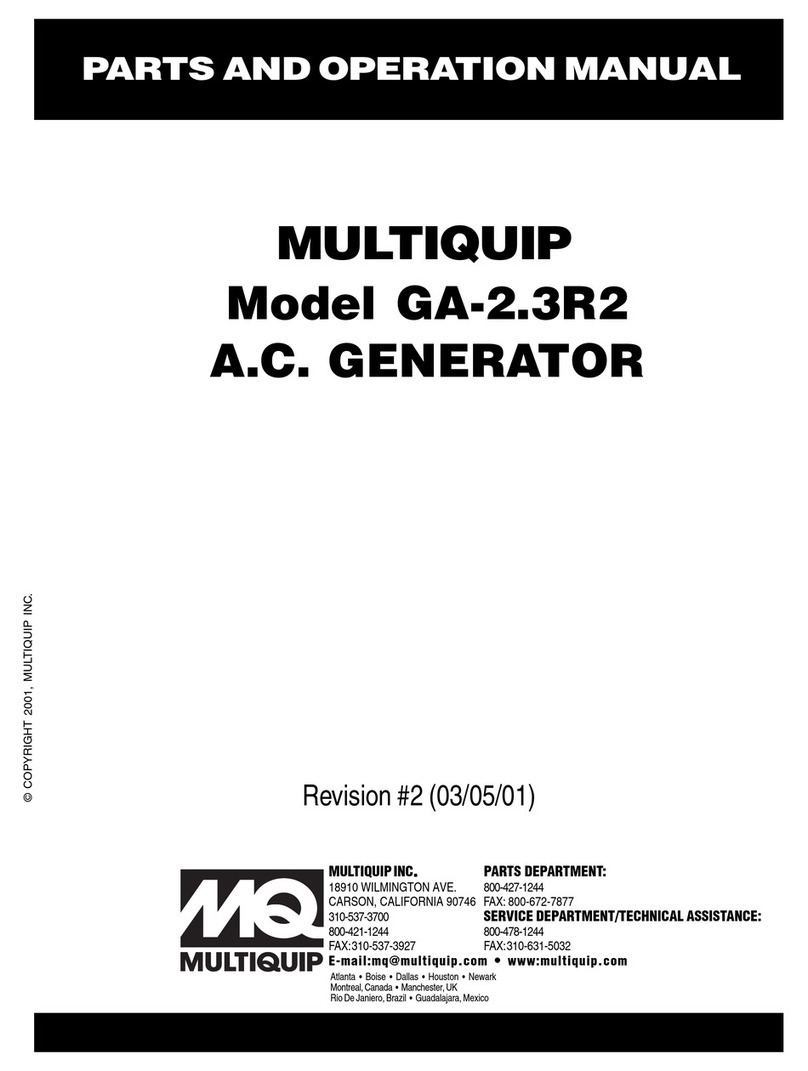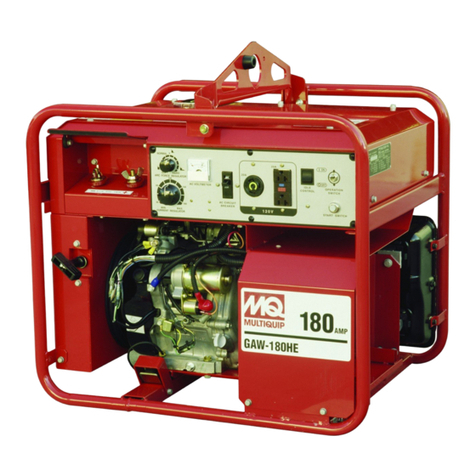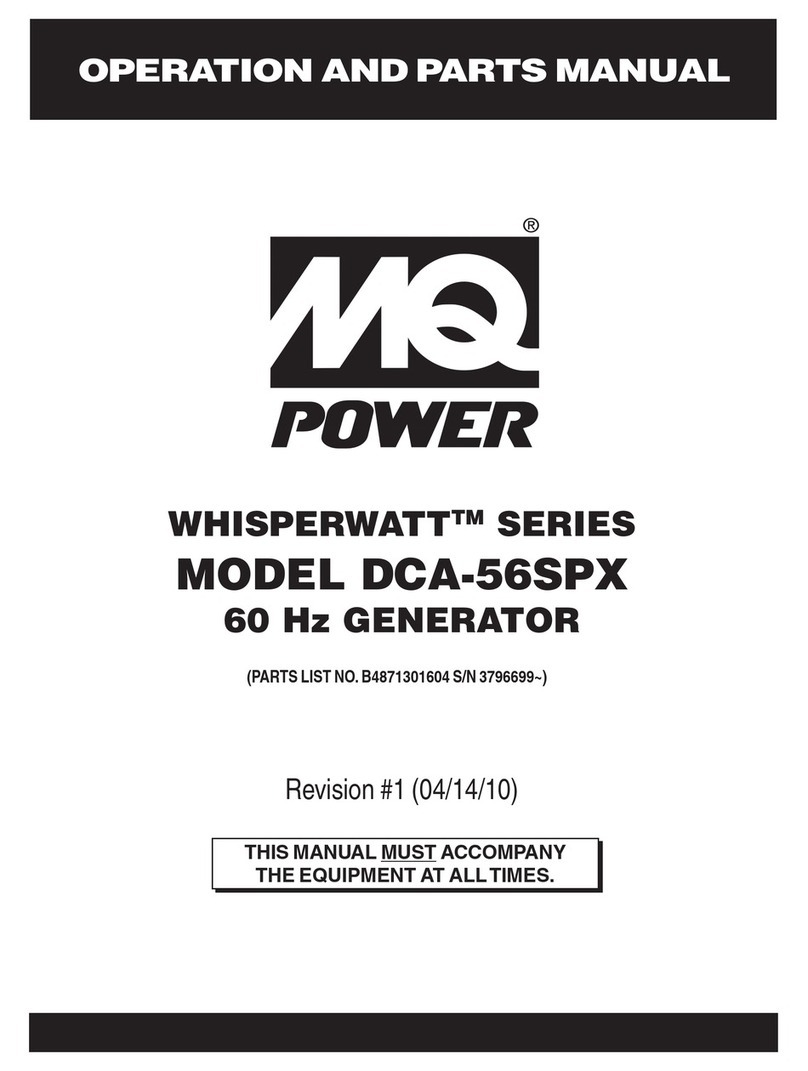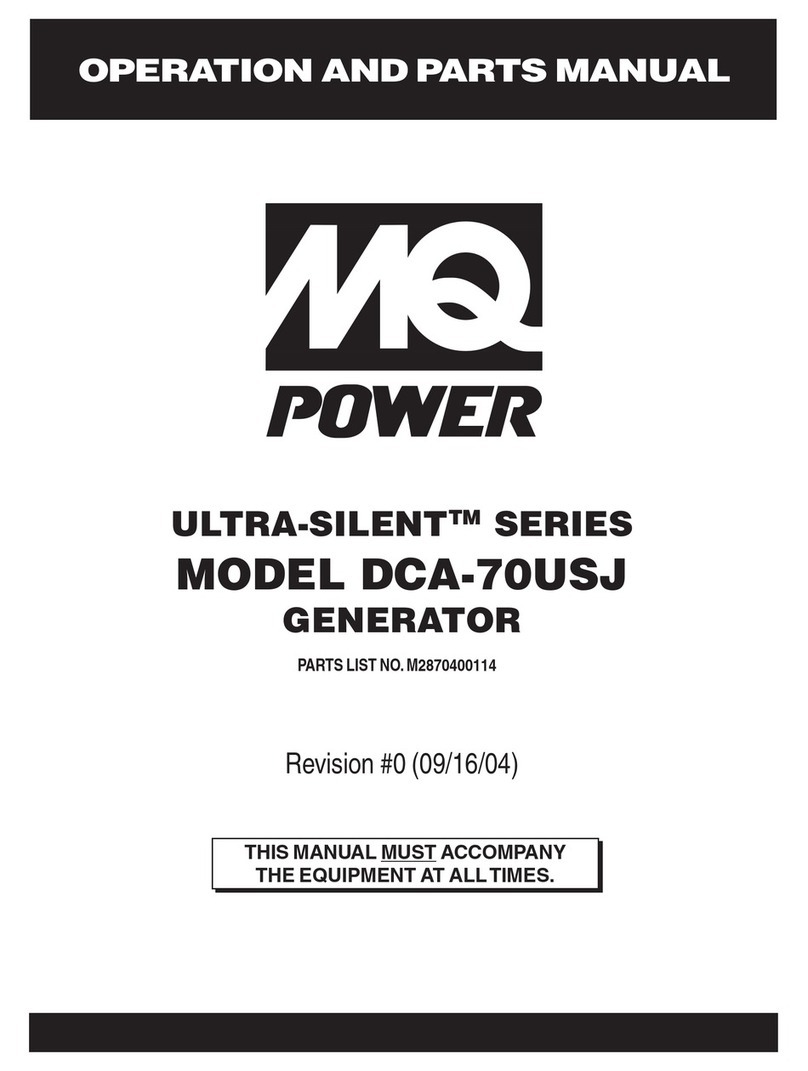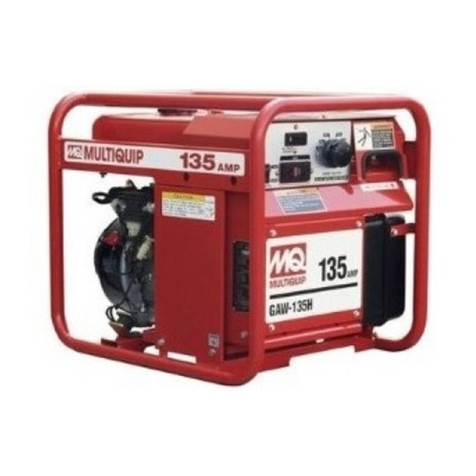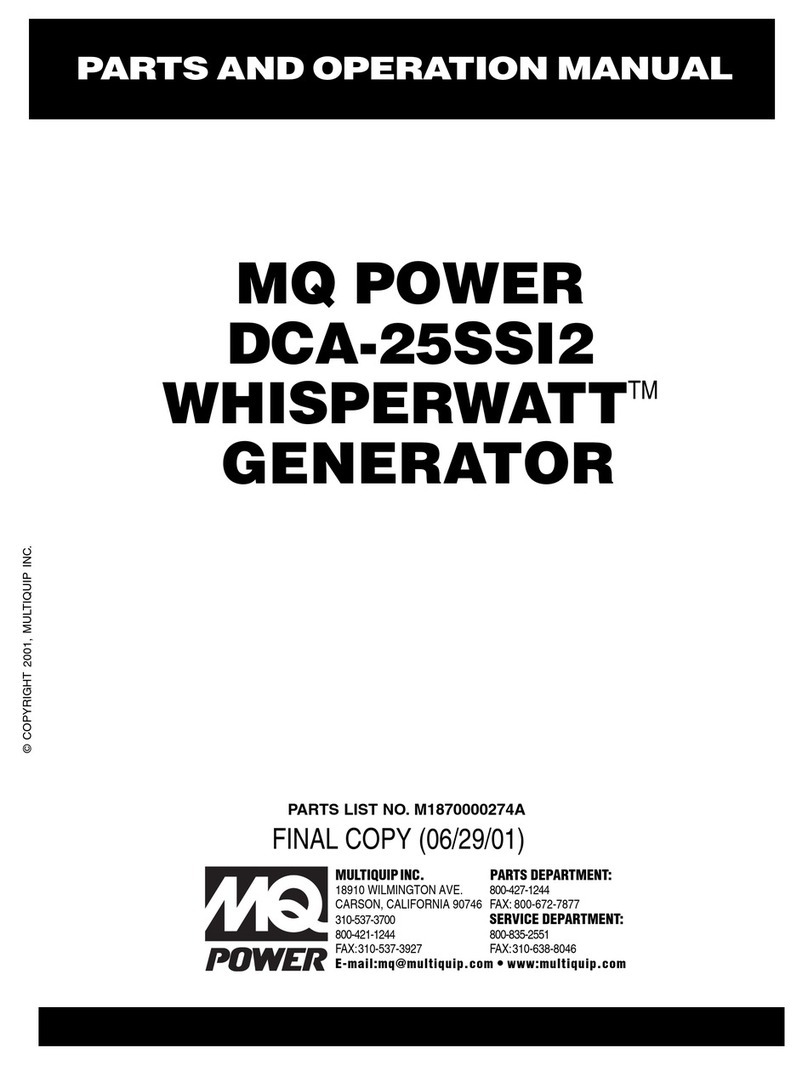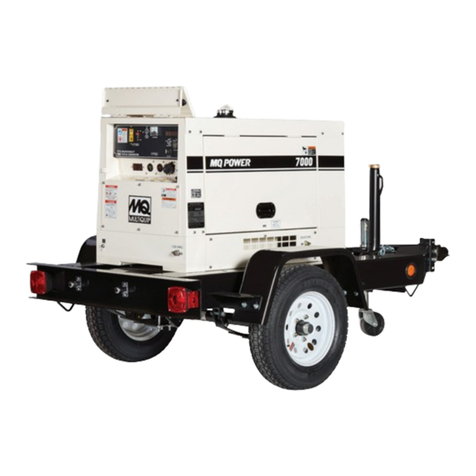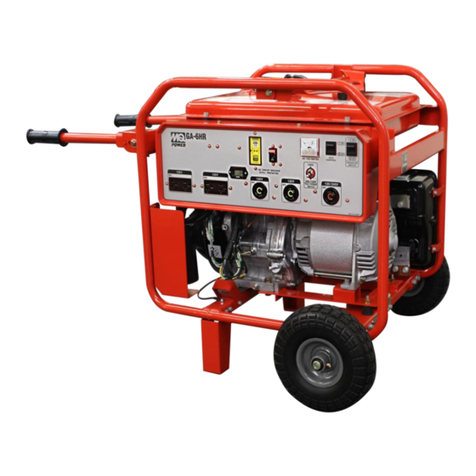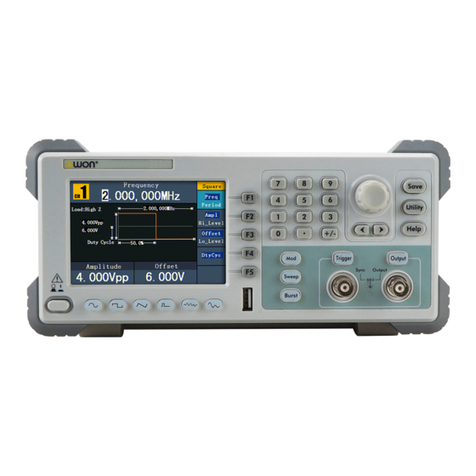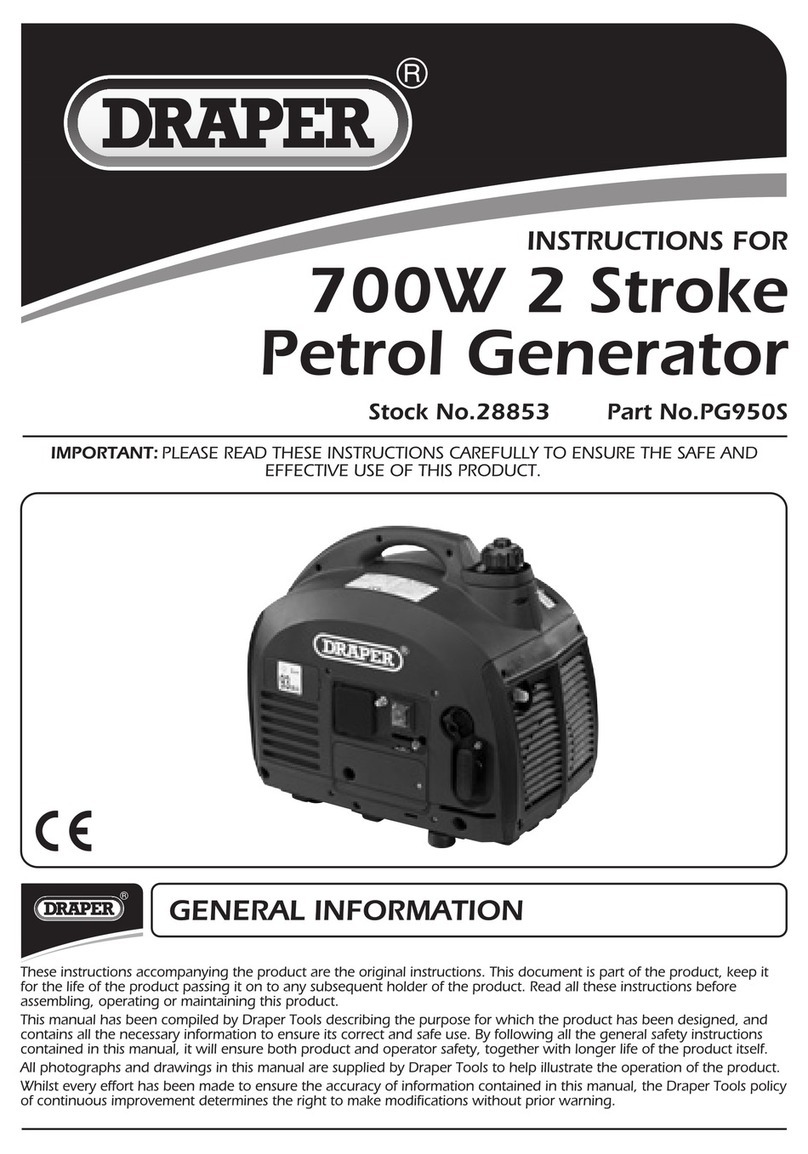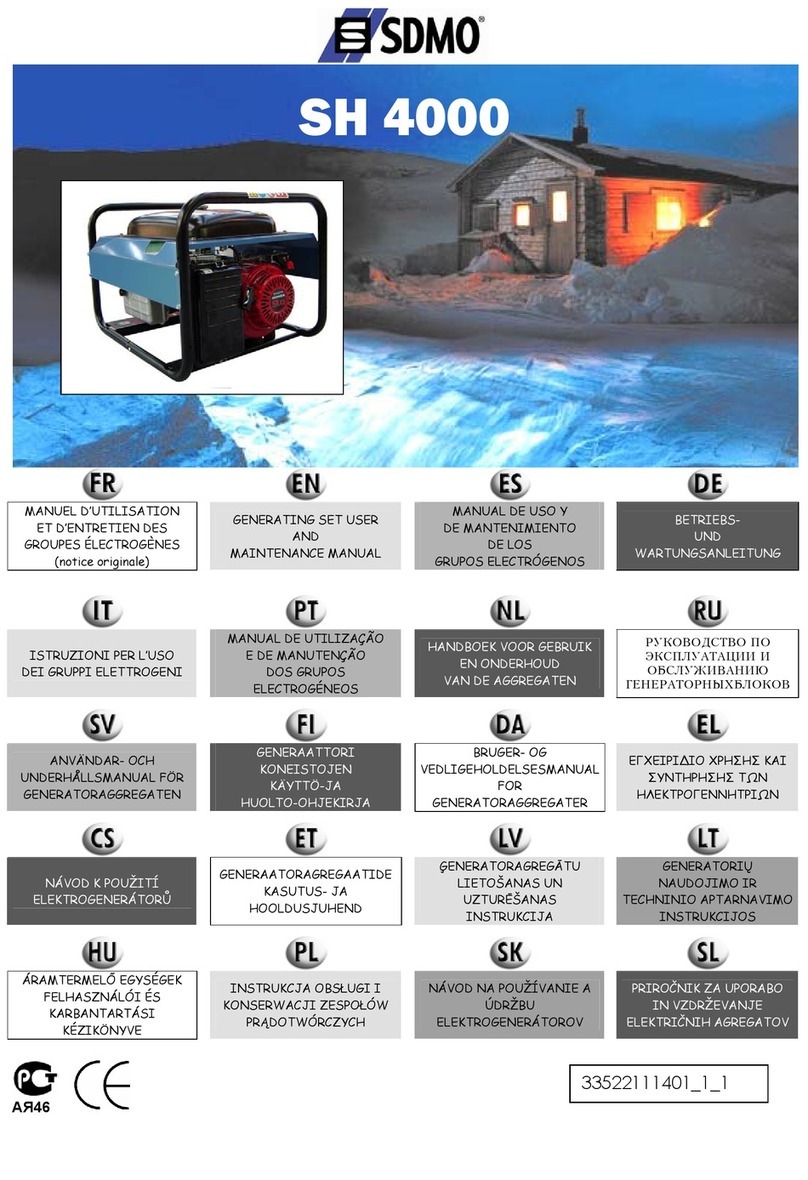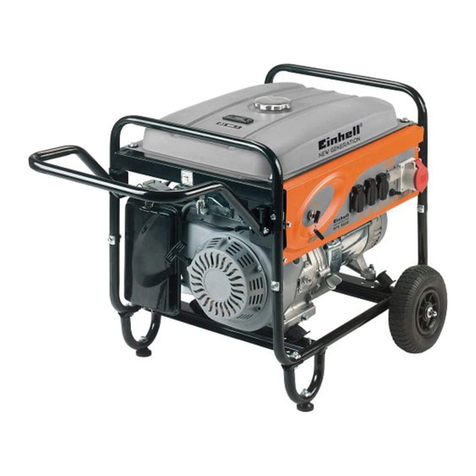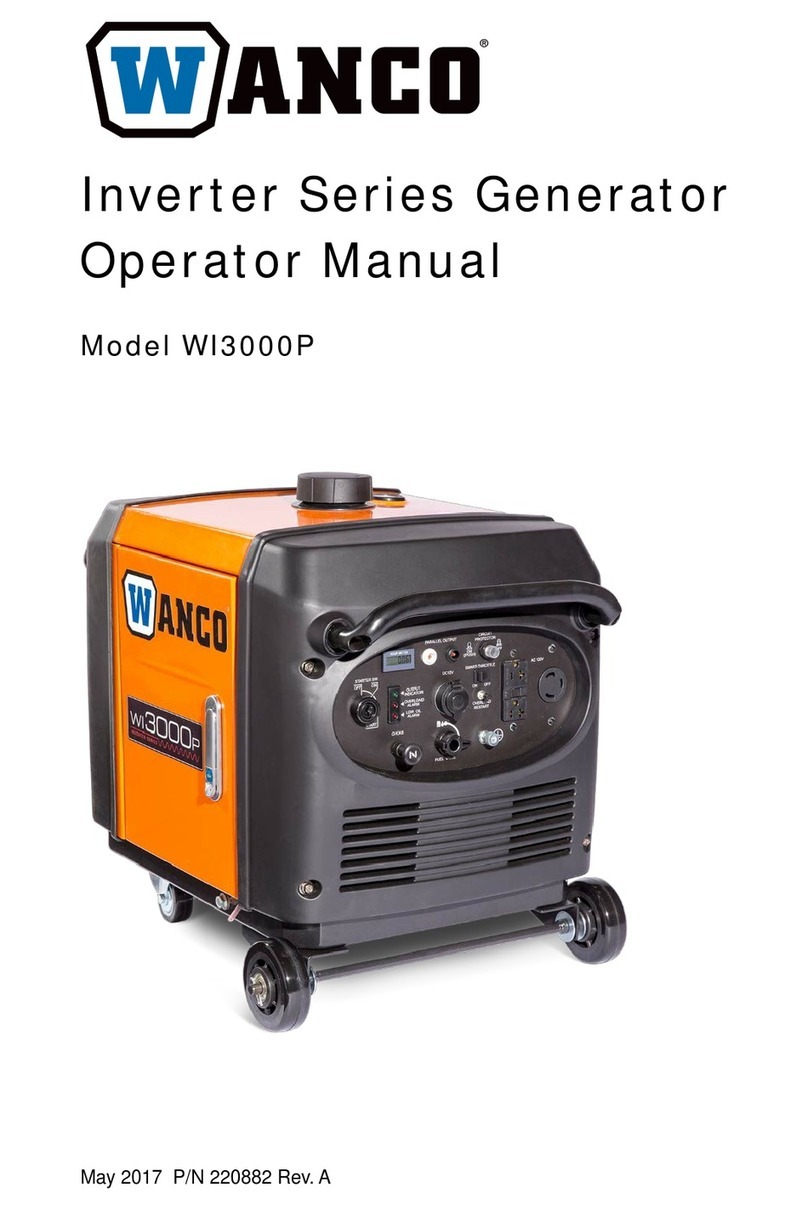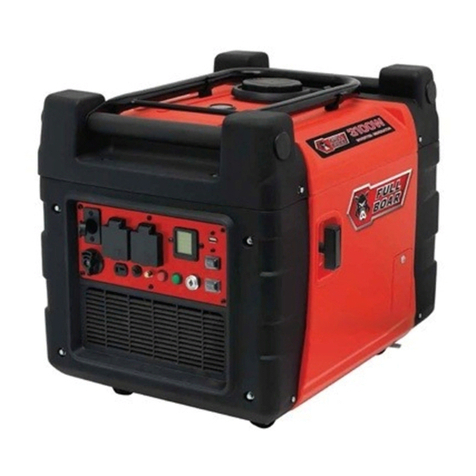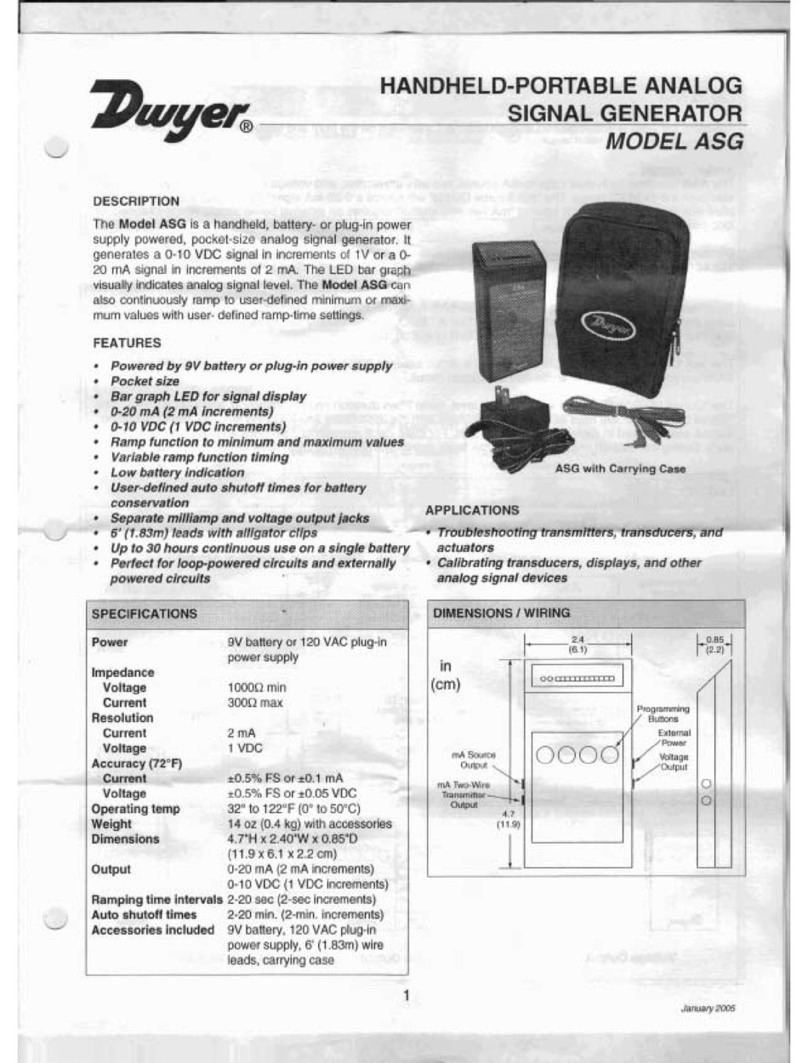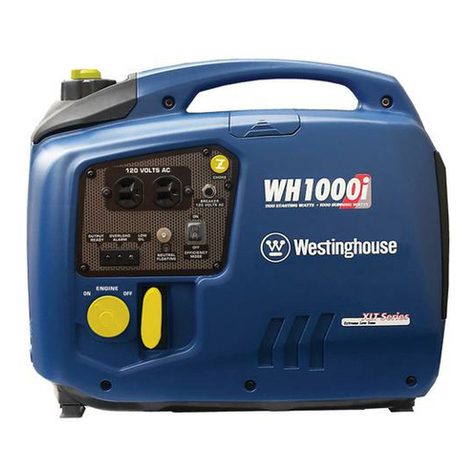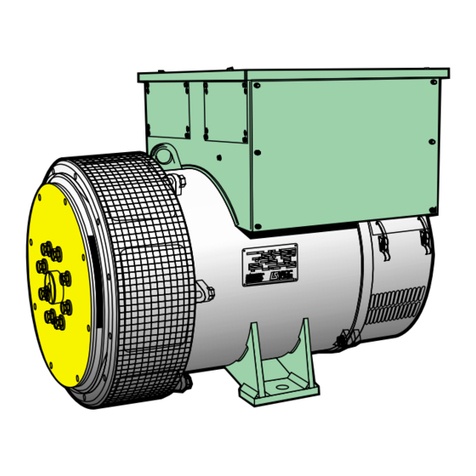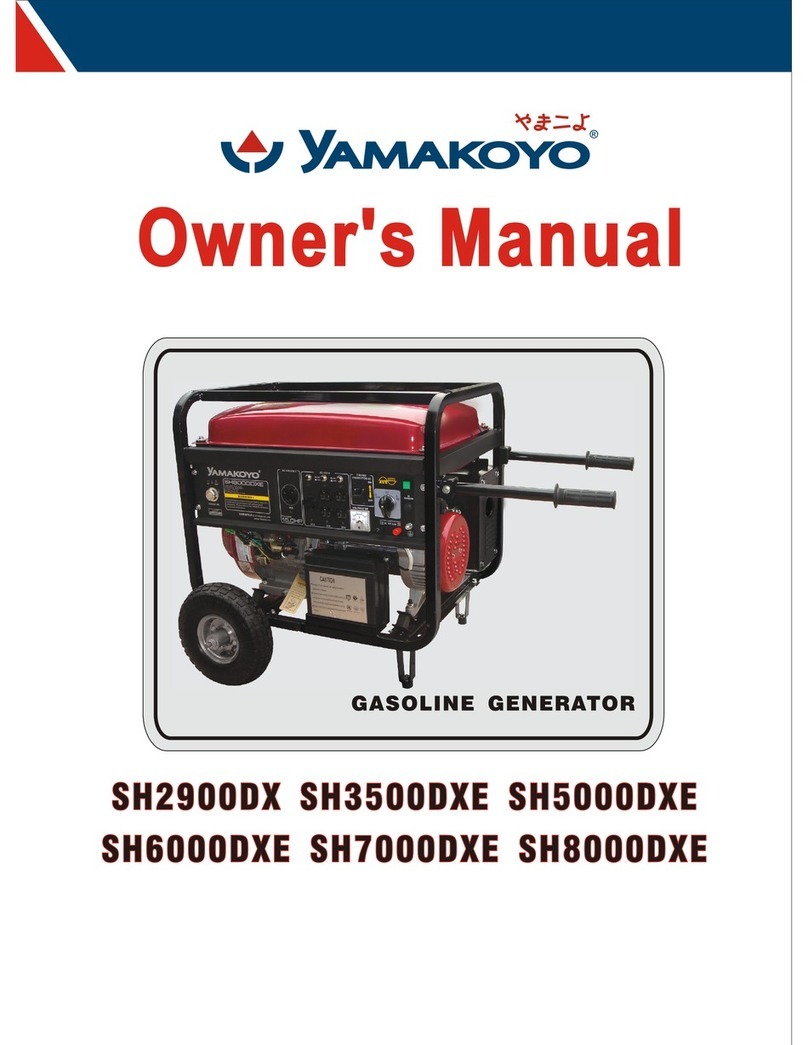
PAGE 8 —DCA-100SSJU —PARTS AND OPERATION MANUAL (STD) —REV. #2 (05/03/01)
RULES FOR SAFE OPERATION
■
NEVER Run engine without air filter. Severe engine
damage may occur.
■
Alwaysserviceaircleaner frequently to preventcarburetor
malfunction.
■
Always disconnect the battery before performing service
onthe generator.
■
Always be sure the operator is familiar with proper safety
precaution s and operations techniques before using
generator.
■
Always store equipment properly when not in use.
Equipmentshould be stored ina clean,dry locationout of
the reach of children.
■
DO NOT leave the generator runningin the manual mode
unattended.
■
DO NOT allow unauthorized people to operate this
equipment.
■
Always read, understand, and follow procedures in
Operator’sManualbeforeattemptingtooperateequipment.
■
Refer to the
John Deere Engine Owner's Manual
for
engine technical questions or information.
Loading and Unloading (Crane)
■
Before lifting, make sure the generator's lifting hook is
secure and that there is no apparent damage to the
generator itself (loose screws, nuts and bolts). If any
part is loose or damaged, please take corrective action
before lifting.
■
Always drain fuel prior to lifting.
■
Always make sure crane or lifting device has been
properlysecuredto thehookofguardframeongenerator.
■
NEVER lift the machine while the engine is running.
■
Use adequate lifting cable (wire or rope) of sufficient
strength.
■
When lifting the generator, always use the balanced
center-point suspension hook and lift straight upwards.
■
NEVER allow any person or animal to stand underneath
the machine while lifting.
■
When loading the generator on a truck, be sure to use
the front and back frame bars as a means to secure the
generatorduring transport.
Battery
Neveroverfillthebatterywithwaterabove
the upper limit.
CAUTION
:
The battery contains acids that can cause injury to the eyes
and skin.To avoid eye irritation, always wear safety glasses.
Use well insulated gloves when picking up the battery. Use
the following guidelines when handling the battery:
1. DO NOT drop the battery.There is the possibility of risk
that the battery may explode.
2. DO NOT expose the battery to open flames, sparks,
cigarettes etc. The battery contains combustible gases
and liquids. If these gases and liquids come in contact
with a flame or spark, an explosion could occur.
3. Always keep the battery charged. If the battery is not
charged a buildup of combustible gas will occur.
4. Alwayskeepbatterychargingandboostercablesingood
working condition. Repair or replace all worn cables.
5. Always recharge the battery in an open air environment,
toavoidriskofadangerousconcentration ofcombustible
gases.
6. In case the battery liquid (dilute sulfuric acid) comes in
contact with
clothing or skin
, rinse skin or clothing
immediately with plenty of water.
7. In case the battery liquid (dilute sulfuric acid) comes in
contact with your eyes, rinse eyes immediately with
plentyofwater,thencontactthenearestdoctororhospital,
and seek medical attention.
